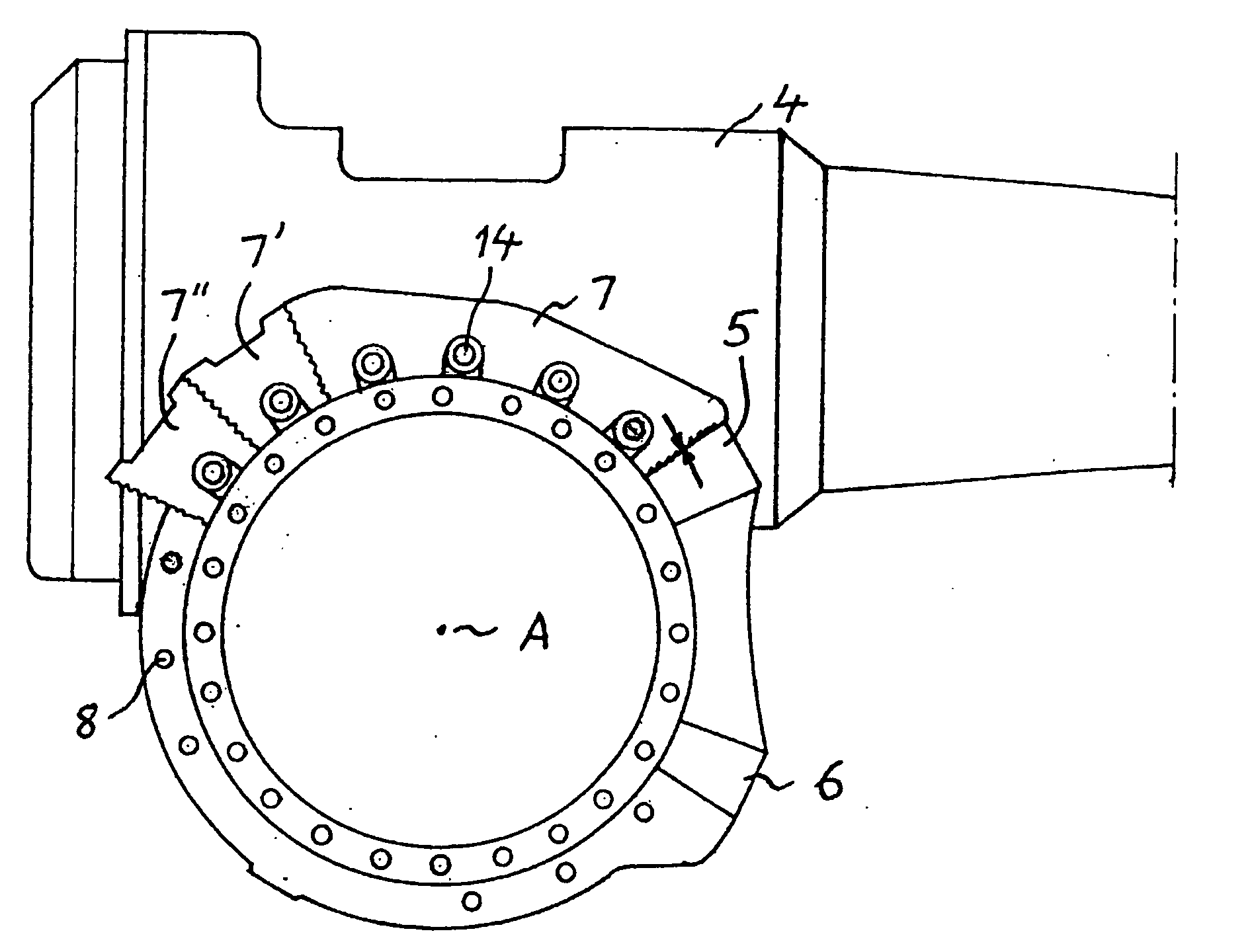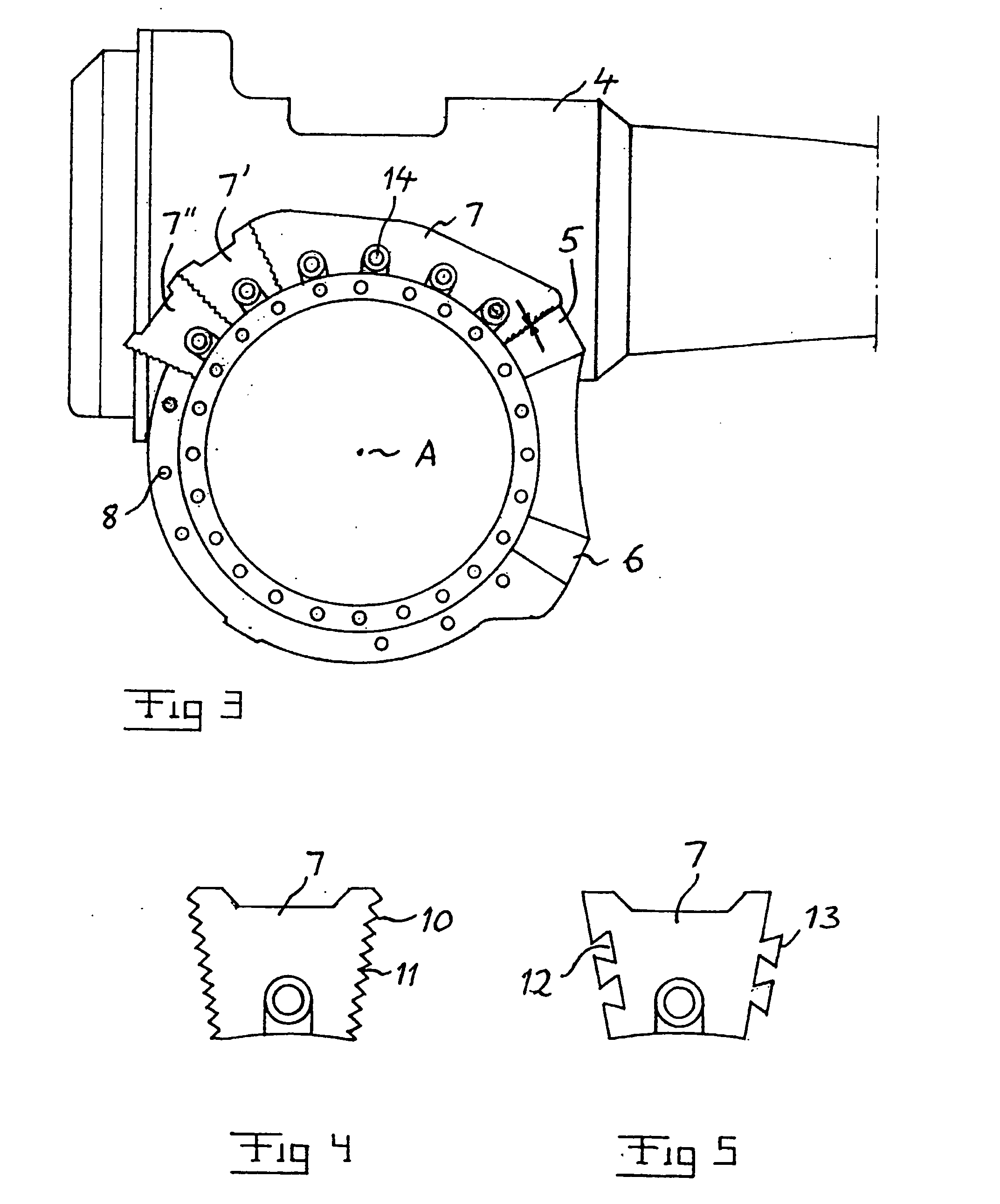Device for an industrial robot
a robot and industrial technology, applied in the field of industrial robots, can solve the problems of not being able to determine the maximum angle of relative rotation of parts and changing this angle, the means for fixing blocks to the first parts, for example a robot arm or a robot foot, may be in the form of bolts, and are subject to very considerable loads, so as to achieve simple and inexpensive manufacturing processes, the effect of simple mounting of stop elements
- Summary
- Abstract
- Description
- Claims
- Application Information
AI Technical Summary
Benefits of technology
Problems solved by technology
Method used
Image
Examples
Embodiment Construction
[0019]FIG. 1 shows one possible type of industrial robot, to which a device for restriction of the working range according to the invention may be applied. The robot has a stand 1 which is rotatably journalled, around a vertical axis C, in a robot foot 2 secured to a mounting base. A first robot arm 3 is pivotally journalled at the stand 1 around an axis B. At the upper end of the arm 3, a second robot arm 4 is pivotally journalled around an axis A.
[0020] The working ranges of the axes A, B and C are restricted, for safety reasons, with the aid of mechanical or electrical stop means, such as a mechanical stop means of the kind to which the present invention relates and which will be described hereinafter while at the same time referring to FIGS. 2 and 3.
[0021]FIG. 2 illustrates how a device according to the invention is arranged for restricting the working range in the form of the maximum angle for rotation of an upper robot arm 4 relative to a lower robot arm 3 around an axis A. ...
PUM
 Login to View More
Login to View More Abstract
Description
Claims
Application Information
 Login to View More
Login to View More - R&D
- Intellectual Property
- Life Sciences
- Materials
- Tech Scout
- Unparalleled Data Quality
- Higher Quality Content
- 60% Fewer Hallucinations
Browse by: Latest US Patents, China's latest patents, Technical Efficacy Thesaurus, Application Domain, Technology Topic, Popular Technical Reports.
© 2025 PatSnap. All rights reserved.Legal|Privacy policy|Modern Slavery Act Transparency Statement|Sitemap|About US| Contact US: help@patsnap.com



